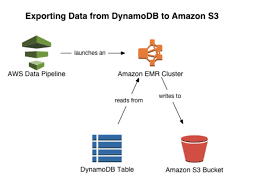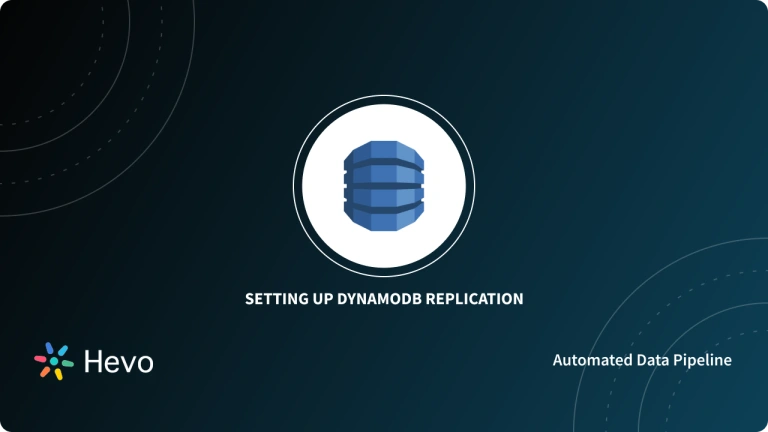 Quick Take
Quick TakeMethod 1:
Hevo No-Code Pipeline – Configure DynamoDB as a source and Postgres as a destination in two clicks. Fully automated, real-time sync with built-in schema mapping and error handling.
Method 2:
Custom Code with AWS Lambda – Write a Python Lambda that reads from DynamoDB via boto3, transforms items, and inserts into Postgres using psycopg2. Offers full control but requires coding, manual error handling, and doesn’t scale or update in real time.
Organizations are migrating from on-premises databases and analytics solutions to the cloud in the modernization process.
In this age of data migrations, it is important to understand the technicalities behind these migrations so that they can be properly implemented.
In this article, take a closer look at the methods you can use to migrate DynamoDB to Postgres.
Looking to migrate DynamoDB to PostgreSQL for enhanced relational database capabilities? Hevo makes the process effortless, allowing you to easily bridge the gap between a NoSQL database and a relational one. Hevo’s no-code platform empowers teams to:
- Integrate data from 150+ sources(60+ free sources).
- Simplify data mapping and transformations using features like drag-and-drop.
- Easily migrate different data types like CSV, JSON, etc., with the auto-mapping feature.
Join 2000+ happy customers like Whatfix and Thoughtspot, who’ve streamlined their data operations. See why Hevo is the #1 choice for building modern data stacks.
Move PostgreSQL Data for FreeTable of Contents
How To Migrate DynamoDB to Postgres?
Method 1: Migrate DynamoDB PostgreSQL Data using Hevo’s No-Code Data Pipeline
You just need to follow 2 Steps to migrate DynamoDB to PostgreSQL data:
Step 1: Configure your DynamoDB Source
Step 2: Configure your PostgreSQL Destination
Try Hevo to easily load your DynamoDB data to PostgreSQL!
Method 2: Using Custom Code to Migrate DynamoDB to PostgreSQL
Prerequisites:
To successfully migrate your data from DynamoDB to PostgreSQL, you need to meet the following requirements:
- Lambda Role with full DynamoDB access.
- Secondly, an AWS Lambda with Python as runtime.
- Lastly, a PostgreSQL Database with all its details.
Step 1: Create an AWS Lambda Function
- Set Up AWS Lambda:
- Create an AWS Lambda function with Python as the runtime.
- Assign the Lambda execution role with the necessary DynamoDB access permissions.
- Import Required Modules:
- Import the necessary libraries for connecting DynamoDB to PostgreSQL:
import psycopg2
import boto3
import os- Install psycopg2:
psycopg2is not available by default in AWS Lambda, so create a Lambda Layer or directly include thepsycopg2files in the deployment package.
- Set Up PostgreSQL Connection:
- Store the database connection details (username, password, host, and database name) as environment variables in the Lambda configuration for security.
- Create a connection to PostgreSQL using psycopg2:
connection = psycopg2.connect(
user=os.environ['user'],
password=os.environ['password'],
host=os.environ['host'],
database=os.environ['database']
)
cursor = connection.cursor()
Step 2: Query DynamoDB
- Use boto3 to query DynamoDB for the required data (e.g., querying by an email):
client = boto3.client('dynamodb')
def lambda_handler(event, context):
dynamoQuery = client.query(
TableName="user",
KeyConditionExpression="Email = :email",
ExpressionAttributeValues={":email": {'S': 'test@email.com'}}
)
email = dynamoQuery['Items'][0]['email']['S']Step 3: Insert Data Into PostgreSQL
- Prepare PostgreSQL Insert Query:
- Create an insert query to insert data into PostgreSQL:
postgres_insert_query = """ INSERT INTO users(email) VALUES (%s) """
record_to_insert = (email,)- Execute the Query and Commit:
- Execute the insert query and commit the transaction:
cursor.execute(postgres_insert_query, record_to_insert)
connection.commit()
count = cursor.rowcount- Return Success Message:
- Return the success message after data insertion:
return (count, "Record inserted successfully into table")Step 4: Full Table Migration (Optional)
To migrate the entire DynamoDB table, you can scan the entire table and insert records into PostgreSQL in a loop:
dynamoScan = client.scan(TableName="user")
for item in dynamoScan['Items']:
email = item['email']['S']
cursor.execute(postgres_insert_query, (email,))
connection.commit()Limitations of the Manual Method
- Automation: Lacks built-in automation for ongoing data migration, requiring additional scheduling or scripts.
- Complexity: Requires coding, setup, and maintenance of connections, making it less user-friendly.
- Scalability: Handling large datasets can lead to performance issues and slow transfers.
- Error Handling: Manual error management can be tedious and prone to issues.
- Real-time Sync: Not ideal for real-time data sync; manual processes may introduce delays.
- Security: Exposing sensitive connection details in environment variables can be risky if not properly managed.
Understanding migrating from DynamoDB to PostgreSQL
What is DynamoDB?
Amazon DynamoDB is a fully managed NoSQL database service offered by AWS (Amazon Web Services). It is designed to provide fast and predictable performance with seamless scalability, making it suitable for applications that require low-latency data access.
What is PostgreSQL?
PostgreSQL is an open-source, general-purpose, object-relational database management system, or ORDBMS. It is widely used and provides advanced features along with standard compliance. Some of these features include complex queries, foreign keys, triggers, and views—all supporting transactional integrity with full ACID compliance.
Inherent in it is vast extensibility for custom data types, functions, and operators. Read about other databases ranked by popularity.
Use Cases To Transfer Your DynamoDB Data to Postgres
- Advanced Analytics: You can run sophisticated queries and do data analysis on your DynamoDB data using Postgres’ robust data processing features to gain insights that aren’t attainable with DynamoDB alone.
- Data Consolidation: In the event that you use DynamoDB in conjunction with several other sources, syncing to Postgres enables you to centralize your data for a comprehensive understanding of your operations and to establish a change data capture procedure.
- Analyzing Historical Data: DynamoDB’s historical data is limited. Data sync with Postgres enables long-term data storage and longitudinal trend analysis.
- Compliance and Data Security: Strong data security protections are offered by Postgres. Advanced data governance and compliance management are made possible by syncing DynamoDB data to Postgres, which also guarantees data security.
- Scalability: Postgres is an excellent alternative for organizations with growing DynamoDB data since it can manage massive amounts of data without compromising speed.
- Machine Learning and Data Science: You may use machine learning models for your data for predictive analytics, consumer segmentation, and other purposes if you have DynamoDB data in Postgres.
- Reporting & Visualisation: Although Postgres can be connected to using DynamoDB, Tableau, PowerBI, and Looker (Google Data Studio) are examples of data visualization programs that can connect to Postgres and offer more sophisticated business intelligence capabilities.
Conclusion
Organizations that migrate DynamoDB to PostgreSQL are offered significant advantages, including cost savings and enhanced flexibility in data management. However, performing this migration could seem like a daunting task without proper tools and skills.
Hevo simplifies this migration process with its automated, no-code solution, which efficiently manages data integration, schema mapping, and real-time synchronization.
By leveraging Hevo, businesses can achieve a smooth and seamless migration, minimizing disruption and allowing them to focus on their core operations. Sign up for Hevo’s 14-day free trial and experience seamless data migration.
Frequently Asked Questions
1. Does DynamoDB support PostgreSQL?
DynamoDB does not support PostgreSQL. DynamoDB is a NoSQL database service, while PostgreSQL is a relational database.
2. How to Migrate Data from DynamoDB?
You can migrate data from DynamoDB by exporting it using AWS Data Pipeline or AWS Glue for ETL tasks. Alternatively, use AWS SDK or boto3 to query and export data programmatically, then load it into your target database (e.g., PostgreSQL or MySQL).
3. How to Migrate DynamoDB to RDS?
To migrate DynamoDB to RDS, export DynamoDB data using AWS Data Pipeline, AWS Glue, or a custom ETL process with boto3. Then, the data can be transformed if needed and loaded into RDS using JDBC or psycopg2 (for PostgreSQL).









